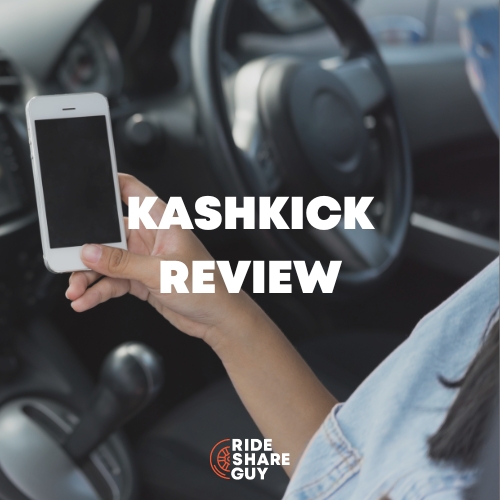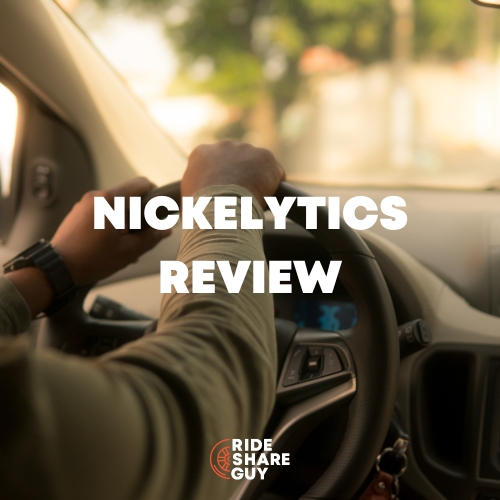Uber recently changed the way its rideshare and delivery driver statements look. Are the new earnings statements more or less transparent than before? Senior RSG contributor Sergio Avedian breaks down both statements and analyzes them for take rates, accuracy and more.
A lot is going on with Uber these days. Through our weekly YouTube livestream, the Show me the money club (SMTMC), we have reached a mass audience. We are growing the club month after month, and we thank all the viewers for their interest and comments on the videos.
We interviewed the CEO of Uber a couple of months ago, and I was pleased that Uber announced upfront fares, which come with something drivers have been asking for a decade: seeing the passenger’s destination before accepting the request.
Uber CEO Dara Khosrowshahi was beaming with pride that upfront fares and destination would simplify drivers’ lives by giving them a choice to accept or decline a trip request without restrictions or acceptance rate (AR) penalties. In fact, he was so confident that this newfound transparency would change the dynamics of the rideshare world, he took all this simplicity of earnings and transparency a step further and publicly admitted that if drivers are not accepting trips or canceling at a high rate, it would be Uber’s fault due to not pricing trips correctly.
The verdict is not out on that claim yet, but initial impressions are negative regarding long trips. We will discuss our findings in a future article.
With upfront fares and destination, Uber also announced that they were updating the passenger receipt drivers were used to for a decade. I get hundreds of emails weekly, and the #1 complaint these days is Uber’s take rate (the percentage Uber takes from passenger fares).
Uber called the new earnings statements received by drivers every Monday “more transparent” and “easier to understand” than ever. Call me a skeptic, but over the past seven years that I have been a driver on the platform, I run when I hear those words!
What is the New Uber Driver Earnings Statement?
I received the following emails from Uber directing me to their website to figure out my earnings. I don’t think it is too much of a hassle. Initially, it seemed pretty clear-cut, but why are they suddenly doing away with the individual passenger receipts? Why are they following Lyft for the first time in a decade by hiding what the passenger paid for a trip right after it ends?
Is it because Uber’s take rate has increased from 20-25% to over 50%? Is it because they don’t want drivers to be mad and switch apps? How is this more transparent? I would love for you to comment below.
I honestly think that what separated Uber from Lyft was full transparency when it came to individual trip receipts, but now we have to visit the website to see all that information.
Understanding Your New Uber Driver Earnings Statement
Once you receive the weekly email from Uber, all you have to do is click the Visit Statement tab, then, you will have to put your ID and password to log on to the website, and you will see the following.
The first page of the Weekly Summary is self-explanatory, as are all the other pages. It will display your total earnings for the week as well as all your deductions for Instant Pay, and other adjustments, along with payouts from your Uber account to your debit card or bank.
As seen below, the second page will show you a total breakdown of earnings by Distance, Minimum Fare Supplement, Surge, Time, Temporary Fuel Surcharge, Wait Time at pick-up, and your promotions and weekly Incentives like Quests, Boost and Tips.
After Upfront Fares were announced, the breakdown is even more simplified since Distance/Time are not factoring in pricing trips any longer, but you will still see the other items.
So far, so good; not too complicated.
The third page is where things get a little tricky, as seen below. Now you will have to get the calculator out if you really want to figure out what Uber’s take rate is or on an individual trip basis.
On the third page, Uber displays what the passengers paid in total. Then Uber proceeds to deduct for items such as the driver’s earnings for the week, as well as for items such as California driver benefits (75 cents per trip for Prop 22 in Los Angeles), Commercial Auto Insurance for Periods 1-2-3 with a $2500 deductible as well as Region/City Fees.
This is where transparency leaves the room for me. Some may say it isn’t so, Sergio, but what was wrong with the old version again? Please refresh my memory!
After all the deductions, Uber’s GROSS Service Fee for that week was $69.94. Remember, they have massive corporate expenditures for its roughly 29,000 employees. During our interview with the Uber CEO, he mentioned that a take rate of 20% from the driver would be fair. He also complained that Commercial Insurance coverage for drivers has almost tripled over the past few years, even though Uber joined Lyft by raising the incident deductible from $1000 to $2500.
Granted, this is just one week of earnings analysis, but I guess the numbers verify that claim. I calculated Uber’s take rate for this specific week by deducting my total earnings from the total of what passengers’ paid”
- $615.70-$429.95=$185.76 then dividing $185.76 by $615.70 equaling 30%
After all the deductions for this specific week, Uber’s Service Fee was just $69.94, which equals about 11%. You certainly can do that for yourself each time you receive your statement from Uber.
The fourth page is where you can look into each individual trip to find out what the passenger paid as opposed to having it at your fingertips previously. Is it more transparent or less? Please comment below.
Each item on this page is a live link where you see UberX. If you really want to figure out what the passenger paid for that individual ride, clicking it will take you to a total trip breakdown like it used to be.
Here is what that process will get you:
What Do Delivery Driver Statements Look Like?
If you sprinkle a few deliveries among your rideshare driving, you will be getting a separate statement for those services. Since you are not transporting humans, Commercial Insurance is not necessary, your own policy is in charge when you are doing deliveries, but this is where I suggest being really careful in the case of an accident while delivering food. Check out our article on how delivery insurance works for couriers here, and our information on choosing a rideshare and delivery-friendly company here.
To me, the delivery driver statement is much less transparent. Unlike rideshare, what the customers paid in aggregate is not even included. The first page is your total earnings, the second page is a total of your fares and tips and a special item I have been receiving since I started doing delivery, Prop 22 funds every two weeks.
Prop 22 was passed in CA with the help of $220 million from Uber/Lyft/DoorDash and became law eliminating AB5 (employee vs IC) during the last national elections. I had never gotten a dime since I make almost double the minimum wage in Los Angeles.
However, delivery rates are so horrible that I have figured out how to pick and choose my trips in order to get the supplementary income. I do short mileage, high tip orders since Uber Eats base pay on most orders is $3-$4. This is embarrassingly low, and Prop 22, which pays for active time only, is a lifesaver for many delivery drivers.
With all that said, the earnings statement for delivery drivers looks like this:
Just like rideshare, each of the delivery links on the statement is live, so you can find out what each customer paid for a specific delivery by clicking on that trip.
If you are curious about what a customer paid for a burrito delivery, the breakdown looks like the following:
Where would I be without the tip on this delivery? And the tip does not get released for an hour after the delivery is completed, so tip baiting is a huge problem in this space.
Takeaways for Drivers
If it ain’t broke, don’t fix it. Is this more transparent than before? You make the call!
I think the tactics Uber has deployed over the past decade have left so much scar tissue on drivers that even when they release Upfront Destinations, which I personally think is a wonderful tool, Uber can’t catch a break.
Why hide the passenger receipt? Yes, you can still get to it, but not immediately after each trip ends, with a few extra clicks. Don’t the Uber executives know that the exorbitant take rates are the talk of the town? It is by far what every driver is complaining about, and in most cases, it may not even be the case!
What do you think about the new driver and delivery earnings statements from Uber? Are they more or less transparent?
-Sergio @ RSG




